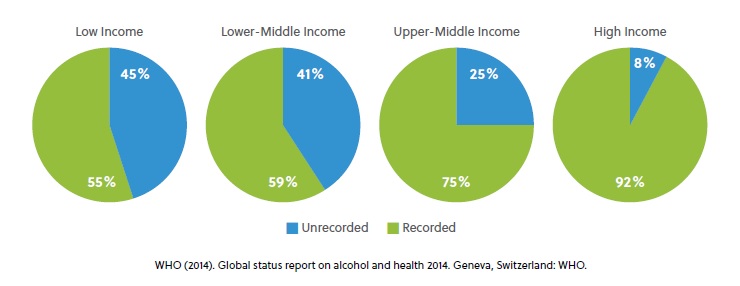What is the issue?
What is the issue?
Both the size and composition of the unrecorded market vary by country and region, as well as over time. The issue is complex, with a number of social, cultural, and economic factors driving the production and consumption of unrecorded alcohol. Unrecorded alcohol is typically cheaper than recorded products, and, according to WHO (2014) estimates, the unrecorded share of the total alcohol market is highest in low- and middle-income countries (see Figure 1).

Unrecorded alcohol also assumes a prominent role in culture and tradition in a number of countries around the world. In many communities, ceremonial consumption of informally produced traditional drinks is central to important social and cultural events and facilitates group identity, cohesion, and leisure-time interaction.
Nonetheless, the unrecorded alcohol market is often clandestine, which makes accurate estimates of its size difficult to obtain in many countries. For the same reason, information on production processes, drinking patterns, and outcomes associated with unrecorded alcohol, as well as the quality and safety of unrecorded products, is also limited. This makes it challenging to study the unrecorded market and develop policy measures and interventions to address it.
